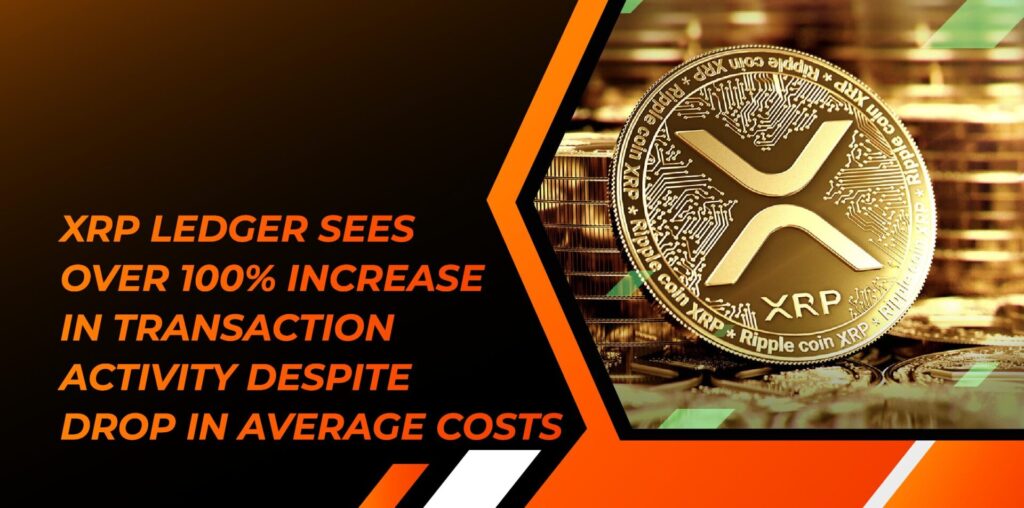- May 20, 2024
- Posted by: [email protected]
- Category:


The XRP Ledger (XRPL) has seen a significant rise in transaction activity, with transaction numbers more than doubling from the fourth quarter of 2023 to the end of the first quarter of 2024. According to Ripple’s Q1 2024 XRP Markets Report, this surge in activity coincided with a notable decrease in average transaction costs, signaling improved efficiency and accessibility of the XRPL network.
In the first quarter of 2024, the XRPL recorded approximately 251.39 million on-chain transactions, reflecting a remarkable 108% increase from the 121.03 million transactions in Q4 2023. Concurrently, the average cost per transaction fell by 45%, dropping to around $0.000856. The report emphasized that the reduction in average transaction costs indicated a reset in the network, suggesting that there was no congestion during the quarter.
This development is particularly advantageous for XRPL users, as lower transaction costs can improve accessibility and encourage more activity on the network. Increased transaction volume is also a positive indicator of network health and user engagement, potentially attracting more participants and enhancing the ecosystem.
The report also noted a steady distribution of trading volume among cryptocurrency exchanges, with Binance, Bybit, and Upbit accounting for over 70% of the total traded volume, maintaining their dominance in XRP trading. However, there was a slight shift in trading pairs, with the proportion of volume traded via fiat pairs decreasing from 15% in Q4 to 11% in Q1. A significant portion of XRP trading now occurs against Tether (USDT), reflecting broader trends in the cryptocurrency market where stablecoins are increasingly used as trading pairs.
The report also touched on the ongoing legal dispute between Ripple and the United States Securities and Exchange Commission (SEC). The SEC filed a lawsuit in December 2020, alleging that Ripple conducted an unregistered securities offering with XRP. Ripple responded to the SEC’s request for $2 billion in remedies on April 22, contesting the demand and arguing that the law does not permit the SEC to require disgorgement or interest on disgorgement unless harm can be proven. Ripple explained, “Both parties will wait for the judge to make a determination on the final remedies, likely in the coming months.”
In alignment with Ripple’s vision to leverage blockchain technology for cross-border payments, the company announced plans to introduce XRP Ledger and crypto-native services, including custody solutions, in Africa. This initiative aims to harness blockchain’s potential to improve financial inclusion and streamline remittances in a region where traditional banking infrastructure is often lacking. This expansion aligns with Ripple’s broader strategy to increase its footprint in emerging markets.
Ripple’s ambitions in Africa come after the company obtained a Virtual Asset Service Provider (VASP) license from the Central Bank of Ireland (CBI) last year. The CBI initiated the VASP license registration process in 2021, which focused on anti-money laundering and counter-terrorism regulations. This licensing milestone is part of Ripple’s commitment to regulatory compliance and enhancing trust within the financial industry.
The surge in transaction activity on the XRPL, coupled with lower transaction costs and strategic expansions, highlights Ripple’s ongoing efforts to enhance the utility and adoption of its blockchain technology. These developments position the XRP Ledger as a robust and scalable platform for various financial applications, promising a positive outlook for its future growth and impact.



